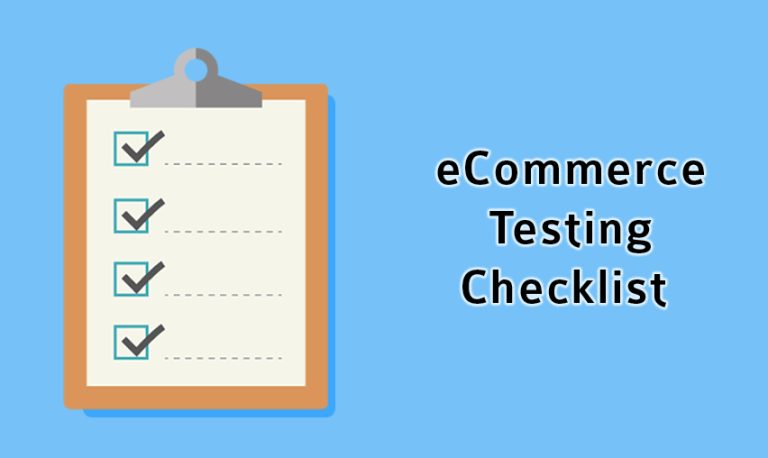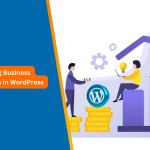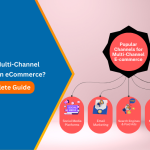In December 2014, the world’s biggest online marketplace Amazon came under fire for a software glitch. Thousands of products on the online store across categories were sold for just 1 pound. From toys, video games, clothing, and electronics to mattresses – a large number of products were mistakenly available for just one pound.
For customers, it was like Christmas coming soon. But, for the third-party sellers on Amazon, it was Nightmare before Christmas. This software glitch cost massive losses for independent sellers, most of whom were small, family-run businesses. Some retailers stated that they lost over 20,000 pounds in a single night.
Though Amazon tried its best to salvage the situation by canceling orders that hadn’t been shipped yet, there was no denying that the situation was pretty catastrophic. Canceling orders meant that sellers had to lose their rating.
This incident is a grim reminder of how it’s highly critical that each and every component of an ecommerce store should be thoroughly tested. Comprehensive testing is essential to ensure the performance of the site as well as to provide customers with the best experience.
Testing must be integrated right into the steps of building your ecommerce website. It should never be an afterthought. Testing is as essential as the initial site design.
“The more thoroughly you test your site; the better the business and higher the sales made.”
Now, that we’ve convinced you of the benefits of testing, wondering how to go about it. Worry not, in this blog post we have compiled a detailed eCommerce website testing checklist that you can use

See How Our Experts Can Drive More Traffic to Your Website!
SEO: Boost your rankings and drive more organic traffic today!
Website Design/Development: Create a stunning website that converts visitors into customers.
Paid Media: Reach the right audience at the right time with expertly managed paid media.
It’s all about the User Experience
When it comes to ecommerce stores, your No.1 goal must be to provide users with an exemplary experience. If you don’t meet this goal, then your customers would leave with a sour taste and could never return to your store.
The adage, “You never get a second chance to make the right first impression,” holds very true for online stores. Hence, it’s essential that all the features on your site are implemented in the right way and are functioning perfectly as intended.
You have to test every component of the user journey. This includes everything – right from the moment a user lands on your homepage, login/signup, searching for a particular product, navigating user categories, adding products to the cart/wish-list, filling up payment details, and finally proceeding to the payment gateways.
Every single aspect has to be thoroughly tested and modified to provide users with the best experience.
Here, you can find a list of all the major test cases and user segments that have to be tested on your ecommerce store.
The Ultimate eCommerce Website Testing Checklist
Let’s Discuss Each Point in Detail
1) Homepage
This is the first page that the user sees, so you have to make sure that you get it to bang on. There are plenty of styles when it comes to ecommerce store homepages. But, mostly all of them have the hero image.
This is the clickable image (very often a slideshow of a few images) that occupies the top half of the homepage.
Here are a few test cases for the hero image on the homepage:
- Will, it auto scroll? If yes, what is the image refresh time?
- What will happen if the user hovers the mouse on top of the image? Will it pause or continue to auto-scroll to the next one?
- Can it be clicked on? If yes, does it go to the right deal page?
- Can users hover on the image?
- Do the slider images load fast or do they take a longer time to load compared with the other parts of the homepage?
- Is the rest of the homepage content easily viewable?
- Does the homepage look fine across popular browsers and when viewed on screens with varying resolutions?
Factors to consider while testing the Rest of the Homepage:
- Is it easy for the user to find the shopping cart?
- Can the login/signup button be easily located?
- Is the contact information easy to be located?
If you find the results of any of these test cases not up to your expectation, then don’t hesitate to get in touch with your ecommerce website design agency to redo it as early as possible. It’s better to spend extra time getting your site perfect rather than providing users with a less than an optimal user experience
2) Search
The search feature is one of the most used options in an ecommerce store. Though you may have an extensive and intuitive category design, it’s not always possible for customers to find the product they’re looking for. So, they are bound to use the search bar to locate products quickly without wasting time.
Here are a few test cases for the Search Feature:
- Search using the product name, brand name, or the generic product category. For instance, if a customer is looking for a mobile phone, he may use any one of these search terms – iPhone X, Apple iPhone, or even just iPhones. You have to ensure that your search results are relevant for all these queries.
- Do the search results have sorting options? If yes, can customers sort the results based on price (high to low, low to high), date (newly added products), brand, review/ratings, and more?
- How many search results are displayed on every page?
- If search results go beyond a page, is it easy for users to navigate between the pages?
Remember that the customer can search for a product right on the homepage or from any interior pages. So, the search has to be adapted according to it. For instance, if a user searches for “Game of Thrones” on the home page, the results can be extensive including various categories like merchandise, accessories, books, DVDs, and more. On the other hand, if a user searches for “Game of Thrones” on the Books Category page, then the search results should include just the books in the series.
3) Product Details Page
This is the page that the user is taken to from the search results or by browsing the various categories. Here are a few factors to check on the product details page:
- Image clarity on screens of different resolutions
- Product price
- Shipping costs
- Specifications of the product
- Customer reviews
- Check out options
- Stock accuracy
- Variations of the product (size, color, etc.)
- Similar products
- Other products bought by customers who purchased this item
- And, so on
4) Categories
Under this, you have to check the following elements:
- Categories
- Recommended Products
- Related Products
- Featured Products
If you’re wondering whether you have to check every category or product on your ecommerce store, rest assured the answer is NO. Just do random checks under each sub-category to find out whether all these elements are functioning the way they were intended.
- If a customer is a returning customer, then does the recommended product list show the right products based on the user’s previous purchases or items in the shopping cart?
- Does the featured product list change every day?
Since most of these are dynamic elements, you can hire Magento programmers to check these elements using backend queries
5) Shopping Cart
This is the penultimate stage. If the user completes this stage successfully, he/she moves on to the final stage, making the payment.
Here are what you have to test on the Shopping Cart Page:
- Whether it’s possible for the user to add items to the cart and continue shopping
- If the user adds the same item to the shopping cart, is the item count getting incremented?
- Check if the cart displays the following numbers correct – total items, cost of each item, total price, taxes
- Is the shopping cart getting updated in real-time? Means if a user adds or removes a product is a price and item number getting updated?
- Is it possible for the user to edit the items in the cart? Delete, change the size, color, etc.
- Is it easy for the user to apply coupons?
- Can the user check the shipping costs and review all the shipping options?
- What happens if the user closes the site without making a purchase? Do the items remain in the cart or does the user have to add the products once again? It’s highly preferred that the items remain in the cart, so the user can complete the checkout process as and when needed.
6) Payments Page
This is the final stage and a crucial one. Failed transactions are one of the big reasons why most customers exit an online store without completing the purchase. So, make sure that you thoroughly test this page. If you’re using Magento for your ecommerce store, then get your Magento 2 development services team to comprehensively test the payment page for all the following use case scenarios.
- Check all the different payment options from start to finish
- Can customers check out as guests? Or should they register before checking out?
- If returning customers, does the page prompt them to sign in?
- If you’re storing customer credit card or debit card details, is this information handled securely? Remember that you must take all steps to ensure that user financial information is highly secure and PCI compliance is a must.
- What is the time-out period of the payments page? Most sites use 300 seconds (five minutes) whereas others have longer periods.
- Once the user completes the payment, what’s the return page defined?
- Does the user receive an order confirmation in the form of an email or text message along with the order number once it’s completed?
7) After Purchase
Once the customer has completed the purchase, he/she must be able to do the following:
- Modify the order
- Cancel the order
- Track shipment
- Returns
Check each of these elements manually to ensure that it’s proceeding without a glitch.
8) Mobile Responsiveness
Today, mobiles and other handheld devices have overtaken desktops and laptops when it comes to internet usage and online shopping. Hence, it’s essential that you check your online store for mobile responsiveness.
Test all these functionalities listed above from mobiles of varying screen sizes. Here are a few factors to look for:
- Do users have to do repeated pinch-and-zoom exercises to view all portions of the site?
- How long does it take for various pages to load on the mobile device?
- Does your site require incessant scrolling?
- Is it mobile-friendly?
9) Site’s Performance
Another important aspect to check on your ecommerce store is its performance. This is a bit technical, so get the help of WooCommerce specialists to help you out.
Here are a few factors to test:
- Page loading speeds
- Uptime
- Website traffic load tolerance
- Database performance
- Data transfer rate
- Throughput
- Efficiency
- Error messages
- WooCommerce SEO – results, meta-descriptions, image alt tags, title tags, URL structure, etc.
10) Miscellaneous Tests
Apart from these, make sure to carry out tests on these miscellaneous use cases:
- User login
- Online chat feature
- FAQs
- Customer Service page
- Contact us page
- Adding reviews
- Social media integration buttons
11) Post-Order Test Cases
There are many different actions that one can do related to the purchase when they place an order on an eCommerce website. Therefore, Post-order functionality testing is one of the most important aspects of eCommerce website testing. Here’s the list of post-purchase test cases:
- Check if the customer can review his recent order or not. Check whether he can check the history of purchased items.
- Make sure that the customer can cancel the order or not. Check whether he can change the quantity of the order or not.
- The last thing that you need to ensure is that the customer can also change billing and shipping, and other profile information.
12) Compatible With Different Web Browsers
Another important point in the testing plan for eCommerce websites is – compatibility with different web browsers. Your eCommerce app or website must support different web browsers, such as Google Chrome, Opera, Safari, Safari, Firefox, and more. Make sure that your customers can make use of the eCommerce website without facing any technical bugs.
13) Workflow of Your eCommerce Web App or App
Whether you have your eCommerce web app or mobile application, it is a must that you test the complete workflow to deliver a stellar eCommerce experience to your customers.
It comprises testing signup, login, search functionality, shopping cart, check-out process, payment gateway, payment processing, remove functionality, and more. Also, make sure that your website can integrate with eCommerce platforms like Magento, WooCommerce, Shopify, and BigCommerce.
14) Security
When testing your eCommerce website, security testing plays the most important role in the checklist. In fact, your testing checklist is incomplete without a security test.
As we all know that eCommerce apps or websites have the most valuable information such as customers’ financial data; therefore, it is a must that it passes the security test. Make sure that you implement tests like SQL injection and ethical login hacks.
Final Thoughts – Don’t make Ecommerce Testing an Afterthought
Make sure that you test every nook and corner of your online store to ensure that it functions optimally. While this list is in no way exhaustive, it covers all the major elements of testing. So, get started, iron out the glitches, and boost customer conversion rates, thereby increasing your profits.








